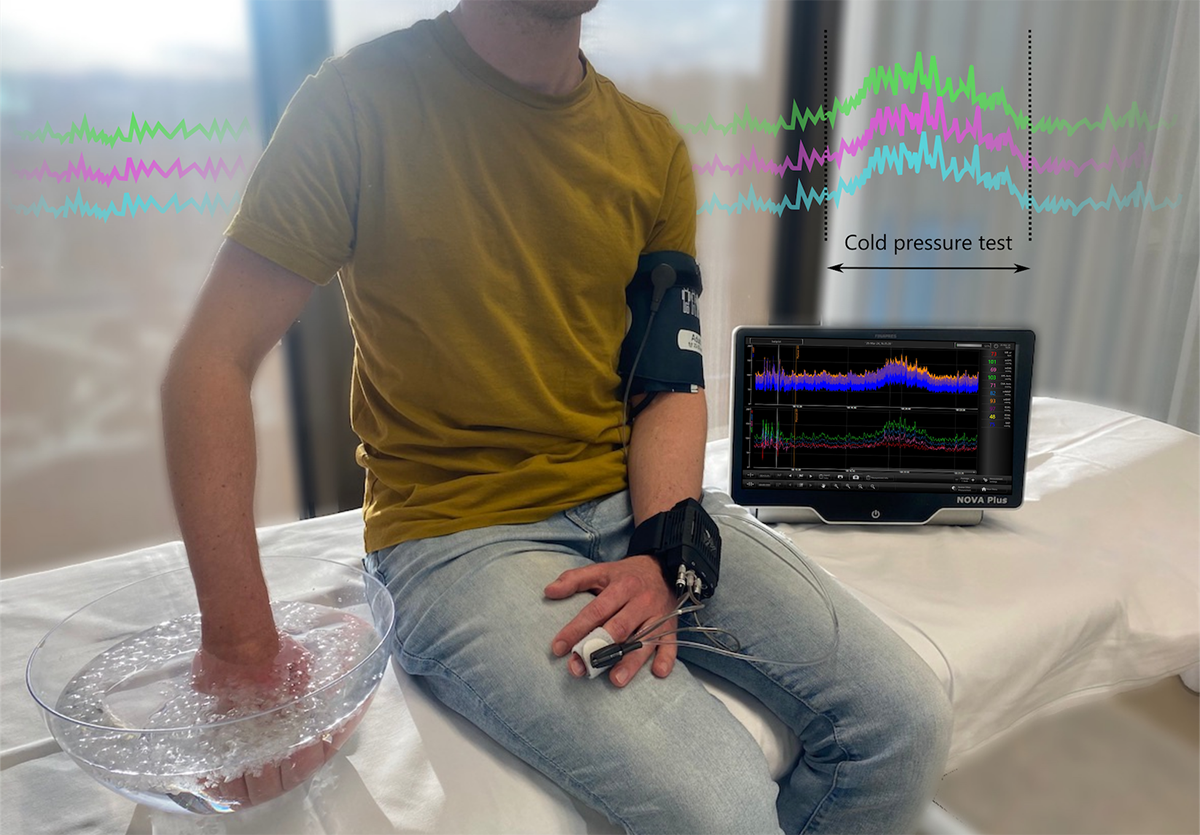Research in Paraplegiology
Pain-Autonomic Interaction in Neuropathic Pain after Spinal Cord Injury

One of the most commonly encountered complications following spinal cord injury (SCI) is neuropathic pain, a condition that substantially compromises the quality of life for affected individuals. Managing neuropathic pain is challenging due to a lack of understanding of the complex pathophysiological mechanisms that cause and maintain this pain condition. One of the identified key mechanisms is central sensitization which can span along the entire neuroaxis. While subjective, psychophysical assessment tools, e.g. pain questionnaires/drawings and quantitative sensory testing are currently utilized to indirectly evaluate such sensitization processes, more objective, physiological measurements of sensitization are lacking. In this regard, our research group makes use of the fact that the nociceptive and autonomic nervous systems are functionally and structurally closely related and interact in a bidirectional manner. For instance, a noxious stimulus triggers a plethora of autonomic responses such as increases in sympathetic skin responses, blood pressure, heart rate, and pupil dilation.
Over the past few years, our group has gathered initial evidence that painrelated autonomic measures can indeed serve as surrogate markers for central sensitization in patients with widespread neuropathic pain after SCI. Current ongoing projects seek to explore the relationship between the cardiovascular and pain control systems. Both systems are known to be potentially dysfunctional after an SCI, but their relationship has not been investigated yet and might provide a novel target for pain intervention.
Schmerzmechanismen
Die Mechanismen chronischer neuropathischer Schmerzen können mit objektiven neurophysiologischen und autonomen Messungen untersucht werden. Das Schmerz- und das autonome Nervensystem sind funktionell und strukturell eng miteinander verbunden und interagieren bidirektional. Ein schmerzhafter Reiz löst eine Vielzahl autonomer Reaktionen aus, etwa einen Anstieg der sympathischen Hautantwort oder des Blutdrucks. Es gibt erste Hinweise, dass schmerzinduzierte sympathische Hautantworten als potenzielle Marker für zentrale Sensibilisierung bei neuropathischen Schmerzen sein können. Untersuchungen der Interaktion zwischen kardiovaskulären Dysfunktionen und neuropathischen Schmerzen bei Patientinnen und Patienten mit Rückenmarksverletzungen sollen neue Ansätze für Schmerzintervention generieren.
At a Glance
Pain-Autonomic Measures in Spinal Cord Injury
Key Collaborators
Project lead: PD Dr. Michèle Hubli
Joëlle Metzger
Prof. Dr. med. Jan Rosner
Prof. Dr. John Kramer
Departments and Partners
Balgrist University Hospital: Spinal Cord Injury Center
Aarhus University, Dept. of Clinical Medicine, Danish Pain Research Center
University of British Columbia, Intl. Collaboration on Repair Discoveries
Clinical Relevance
To better understand pathophysiological mechanism of neuropathic pain
Further Information
> Spinal Cord Injury Center UZH
